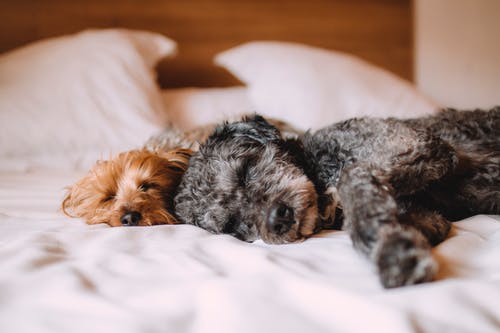Pets hold a special place in our hearts, often becoming cherished members of our families. When our furry companions require surgery, whether it’s a routine procedure or a complex operation, our primary concern is their safety and comfort. Veterinary surgeons ensure pets receive the best care during surgical procedures. This article will explore the world of veterinary surgeons, their commitment to pet well-being, and their steps to ensure pets’ safety and comfort in surgery.
What Is Veterinary Surgery?
Vet surgery is a specialized field of veterinary medicine that deals with animal surgical procedures. Veterinary surgeons, also known as veterinary specialists in surgery, are highly trained professionals with expertise in performing various surgical procedures on animals, including dogs, cats, and other companion animals. These surgeries range from routine procedures like spaying and neutering to more complex operations, such as orthopedic surgeries or tumor removals.
How Vet Surgeons Ensure Pet Safety and Comfort
Veterinary surgeons go to great lengths to ensure the safety and comfort of pets during surgical procedures. Here are some key ways in which they accomplish this:
1. Thorough Pre-Surgical Assessment
Before any surgery, veterinary surgeons conduct a comprehensive pre-surgical pet assessment. This involves a physical examination, blood tests, and, in some cases, advanced imaging such as X-rays or ultrasounds. This assessment helps identify any underlying health issues that might increase the risks associated with surgery.
2. Tailored Anesthesia Protocols
Anesthesia is a critical component of pet surgery. Veterinary surgeons carefully select the appropriate anesthesia and pain management protocols based on the pet’s age, breed, size, and overall health. Modern anesthetics are safer and more precise than ever, allowing for a smoother and quicker recovery.
3. Monitoring Vital Signs
During surgery, pets are continuously monitored by trained veterinary staff. Vital signs such as heart rate, blood pressure, temperature, and oxygen levels are closely watched to ensure the pet’s stability throughout the procedure. Advanced monitoring equipment provides real-time data that helps detect and address any abnormalities promptly.
4. Sterile Surgical Environment
Veterinary surgeons operate in a sterile environment similar to human surgical suites. Sterilization of instruments, gloves, and surgical drapes is a standard practice to minimize the risk of infection. This commitment to cleanliness reduces post-operative complications and discomfort.
5. Pain Management
Managing pain is a top priority for veterinary surgeons. Pets are provided pain relief medications before, during, and after surgery to ensure they are as comfortable as possible. Pain management plans are tailored to the individual needs of each pet.
6. Minimally Invasive Techniques
Whenever feasible, veterinary surgeons opt for minimally invasive surgical techniques. These procedures involve smaller incisions and use specialized instruments like endoscopes and laparoscopes. Minimally invasive surgery often results in less pain, shorter recovery times, and reduced pet scarring.
7. Post-Operative Care
Once the surgery is complete, the care continues. Pets are carefully monitored as they recover from anesthesia. Veterinary staff ensures they wake up smoothly and comfortably. Post-operative care may include pain medication, antibiotics, and wound care.
8. Close Communication with Pet Owners
Veterinary surgeons maintain open and transparent communication with pet owners. They discuss the surgery, potential risks, expected outcomes, and post-operative care instructions. This communication helps pet owners feel informed and confident in the surgical process.
About Vet Diagnostic Labs
In addition to the surgical aspect, veterinary diagnostics play a vital role in ensuring the safety and success of pet surgeries. Veterinary diagnostic labs provide essential services that aid in pet pre-operative assessment and post-operative monitoring.
- Pre-Operative Testing: Veterinary diagnostic labs perform various tests to evaluate a pet’s health before surgery. These tests include blood work, urinalysis, and diagnostic imaging. Results from these tests help veterinary surgeons make informed decisions regarding anesthesia and surgical procedures.
- Pathology Services: In cases where tissue samples are collected during surgery, such as tumor removals, veterinary diagnostic labs analyze these samples for signs of disease. Pathology reports help guide further treatment and ensure that all affected tissue has been removed.
- Disease Screening: Veterinary diagnostic labs offer screening tests that can be crucial for pets undergoing surgery. Detecting diseases like diabetes or kidney problems before surgery allows for adjustments to the anesthetic protocol and post-operative care.
- Ongoing Monitoring: Post-operatively, veterinary diagnostic labs continue to play a role in monitoring pets’ recovery. Follow-up tests like blood work can assess the pet’s overall health and recovery progress.
Learn more about the different Wilton veterinary services by checking on their website.
Conclusion
Veterinary surgeons are dedicated to the well-being of pets, and their commitment to ensuring safety and comfort during surgery is paramount. Through thorough pre-surgical assessments, tailored anesthesia protocols, continuous monitoring, sterile surgical environments, and vigilant pain management, veterinary surgeons work diligently to minimize risks and discomfort for pets undergoing surgery.
The collaboration between veterinary surgeons and diagnostic laboratories further enhances the quality of care provided to pets. Pre-operative testing, pathology services, disease screening, and ongoing monitoring all contribute to the successful outcomes of pet surgeries.



